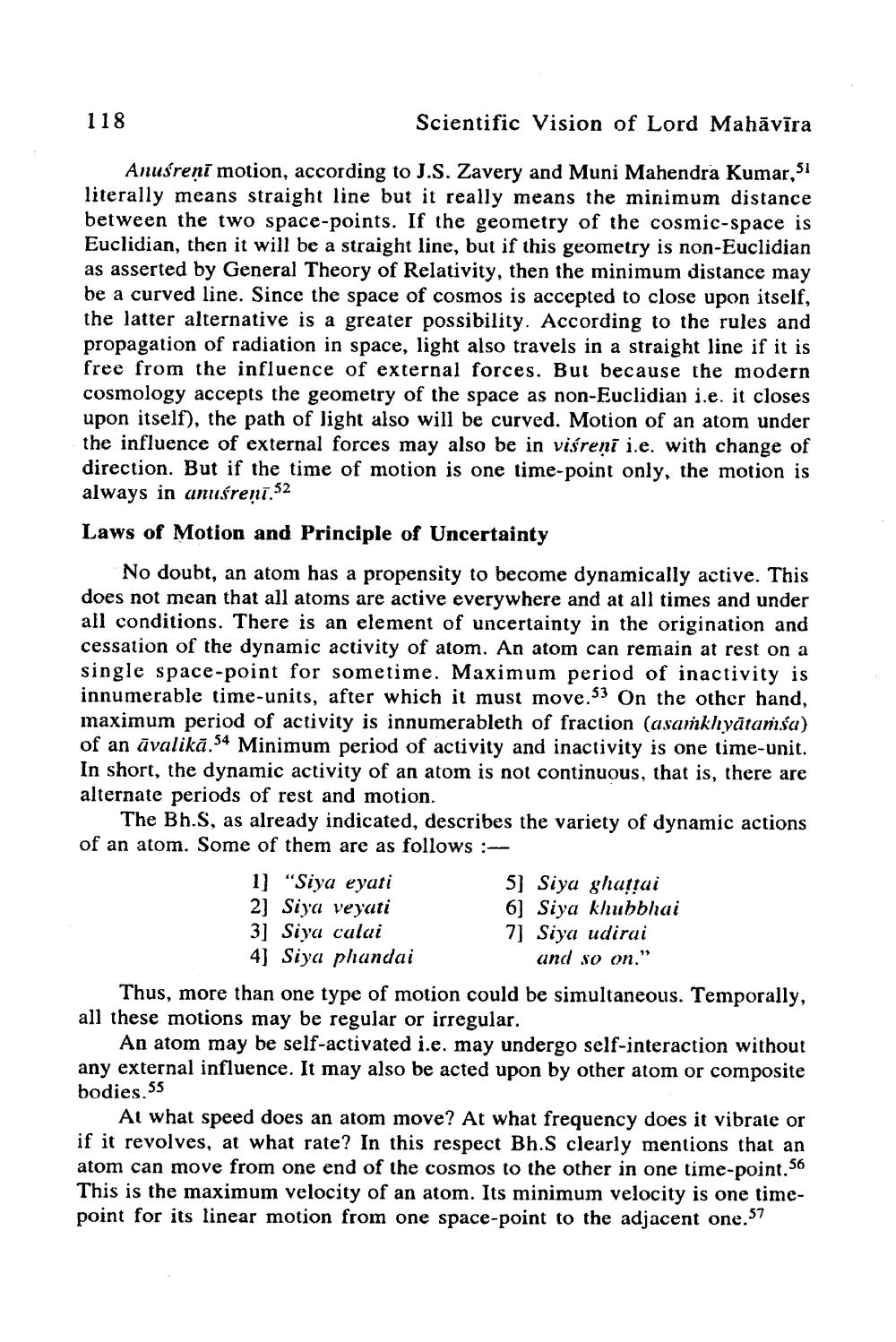________________
118
Scientific Vision of Lord Mahāvīra
Anusrenī motion, according to J.S. Zavery and Muni Mahendra Kumar, Si literally means straight line but it really means the minimum distance between the two space-points. If the geometry of the cosmic-space is Euclidian, then it will be a straight line, but if this geometry is non-Euclidian as asserted by General Theory of Relativity, then the minimum distance may be a curved line. Since the space of cosmos is accepted to close upon itself, the latter alternative is a greater possibility. According to the rules and propagation of radiation in space, light also travels in a straight line if it is free from the influence of external forces. But because the modern cosmology accepts the geometry of the space as non-Euclidian i.e. it closes upon itself), the path of light also will be curved. Motion of an atom under the influence of external forces may also be in viśreni i.e. with change of direction. But if the time of motion is one time-point only, the motion is always in anuśreni.52
Laws of Motion and Principle of Uncertainty
No doubt, an atom has a propensity to become dynamically active. This does not mean that all atoms are active everywhere and at all times and under all conditions. There is an element of uncertainty in the origination and cessation of the dynamic activity of atom. An atom can remain at rest on a single space-point for sometime. Maximum period of inactivity is innumerable time-units, after which it must move.53 On the other hand, maximum period of activity is innumerableth of fraction (asamkhyātamsa) of an avalikā.54 Minimum period of activity and inactivity is one time-unit. In short, the dynamic activity of an atom is not continuous, that is, there are alternate periods of rest and motion.
The Bh.S, as already indicated, describes the variety of dynamic actions of an atom. Some of them are as follows:
1] "Siya eyati
5) Siya ghattai 2] Siya veyati
6) Siya khubbhai 3] Siya calai
7] Siya udirai 4) Siya phundai
and so on." Thus, more than one type of motion could be simultaneous. Temporally, all these motions may be regular or irregular.
An atom may be self-activated i.e. may undergo self-interaction without any external influence. It may also be acted upon by other atom or composite bodies.55
Al what speed does an atom move? At what frequency does it vibrate or if it revolves, at what rate? In this respect Bh.S clearly mentions that an atom can move from one end of the cosmos to the other in one time-point. 56 This is the maximum velocity of an atom. Its minimum velocity is one timepoint for its linear motion from one space-point to the adjacent one.57




